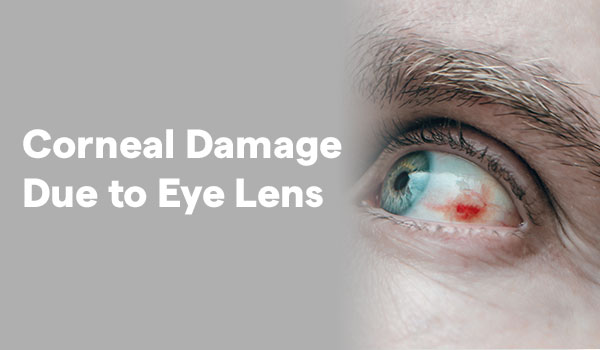
Moreover, the trade market of contact lenses in India is also a rapidly growing industry, with contact lenses being the center of trend among youngsters. The increasing drift towards the rapid use of contact lenses is mostly due to individuals not being comfortable with wearing spectacles anymore and with the urge to present themselves more aesthetically pleasing and appealing.
No matter how picturesque the usage of eye lenses may appear, they are seriously damaging to the eyes if not used properly and efficiently. The extent of damage exhibited by the eye lens could lead to corneal damage and even permanent blindness.
Some contact lens complications include Corneal Hypoxia, which is the main problem among the wearers of contact lenses. This happens when the cornea is not supplied with an adequate amount of blood, which provides nutrients to this organ in the form of oxygen. A contact lens stands between the cornea and the air which in a way starves the eye’s surface of oxygen. Lenses that are for extended wear and lenses with less oxygen-permeable materials can cause hypoxia.
Some of the symptoms of this condition are :
Severe corneal hypoxia may therefore lead to neovascularisation in which new blood vessels form in the cornea to provide the much-needed oxygen supply and this usually has an impact on vision.
Sulfur and oxidation or oxygen deprivation are major causes of Corneal Abrasions among contact lens users in millions all over the world. The cornea or the clear front portion of the eyeball acts as a protective layer and helps focus light. If contact lenses are not well used or worn for long hours they are capable of inflicting different sorts of corneal abrasions.
Another emergency is Corneal Ulceration which is bacterial, fungal, or amoebic in origin in most cases. Patients who use contact lenses also have the likelihood of getting these diseases because bacteria can stick to the contact lens and then remain in touch with the cornea for a long time. This risk however is relatively high if proper hygiene is not observed especially in the handling of contact lenses or when using contaminated solutions. Therefore, corneal ulcers must be treated early to avoid severe pain, light sensitivity, and vision problems.
Long use of contact lenses also leads to the formation of Corneal Warpage which is caused by distortion of the cornea. This operates when the lens continually applies pressure on the cornea resulting in a change of curvature. Other complications involving the cornea include warpage which causes one to have temporary or sometimes even permanent vision issues which means that the person has to do without contact lenses for some time so that the cornea can regain its normal shape.
The other eye condition that is related to the harsh use of contact lenses is giant papillary conjunctivitis. It is characterized by the formation of raised lumps on the undersurface of the upper eyelid as a result of an allergy to deposits that accumulate on the contact lens or the lens material. GPC can lead to discomfort, increased build-up of mucus, and problems with wearing the lenses.
This series of eye-related diseases shows that the chances of damaging one’s corneas are high when one fails to take proper care of the lenses and when one uses them for long.
To avoid any problems with corneal abrasion, one should adhere to certain rules of hygiene when using contact lenses such as :
It is also important to follow the wearing schedule and avoid wearing lenses during the night unless the lenses are intended for continuous wear.
All the above-mentioned precautions are regarded as important for individuals who use contact lenses due to the effects these lenses may have on corneas. An eye care practitioner from the best ophthalmology hospital in Delhi is in a position to identify early signs of corneal damage while they are still mild. They can also provide the right sizes and types to fit the client and also the kind of lens materialization that will suit the lifestyle of the wearer.
To acquire more knowledge about corneal damage due to eye lenses, book an appointment at Sir Ganga Ram Hospital, today.